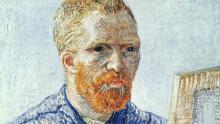Covered on Sunday’s 60 Minutes, Steven Naifeh and Gregory White Smith’s new book Van Gogh: The Life has turned quite a few heads in the art and history worlds as they attempt to rewrite an established story in an iconic author’s life. The established story goes like this: On July 27th, 1889, Vincent Van Gogh walked to a wheat field outside of Auvers-sur-Oise, north of Paris, France. There he shot himself in the chest, and walked back to the inn in which he was staying. There it is well-documented that he had sustained a severe injury, even reporting to his own brother that he had shot himself, but died nonetheless two days later. In Naifeh and White’s account, however, he was shot by someone else, possibly accidentally by local school children, and returned to the inn, covering up their deed before he died soon after.
“The first inkling I got that there was something wrong was when I really started to look at the existing story. There were so many things about it that were wrong and didn’t make sense,” Smith told 60 Minutes. The authors contend that the gun was held at a distance from Van Gogh, and that the bullet’s trajectory was at a “crazy angle”. Additionally, Naifeh asked 60 Minutes, “How did he climb through these vast wheat fields and down the escarpment into the town?” Historical accounts also suggest that local children, particularly two young boys, tormented Van Gogh in the last years of his life.
Whether you believe that these small inconsistencies are significant enough circumstantial evidence to give credence to their claims, it doesn’t change Van Gogh’s legacy as a post-impressionist painter, or the mental anguish and melancholy that has been so closely associated with the artist’s work.
